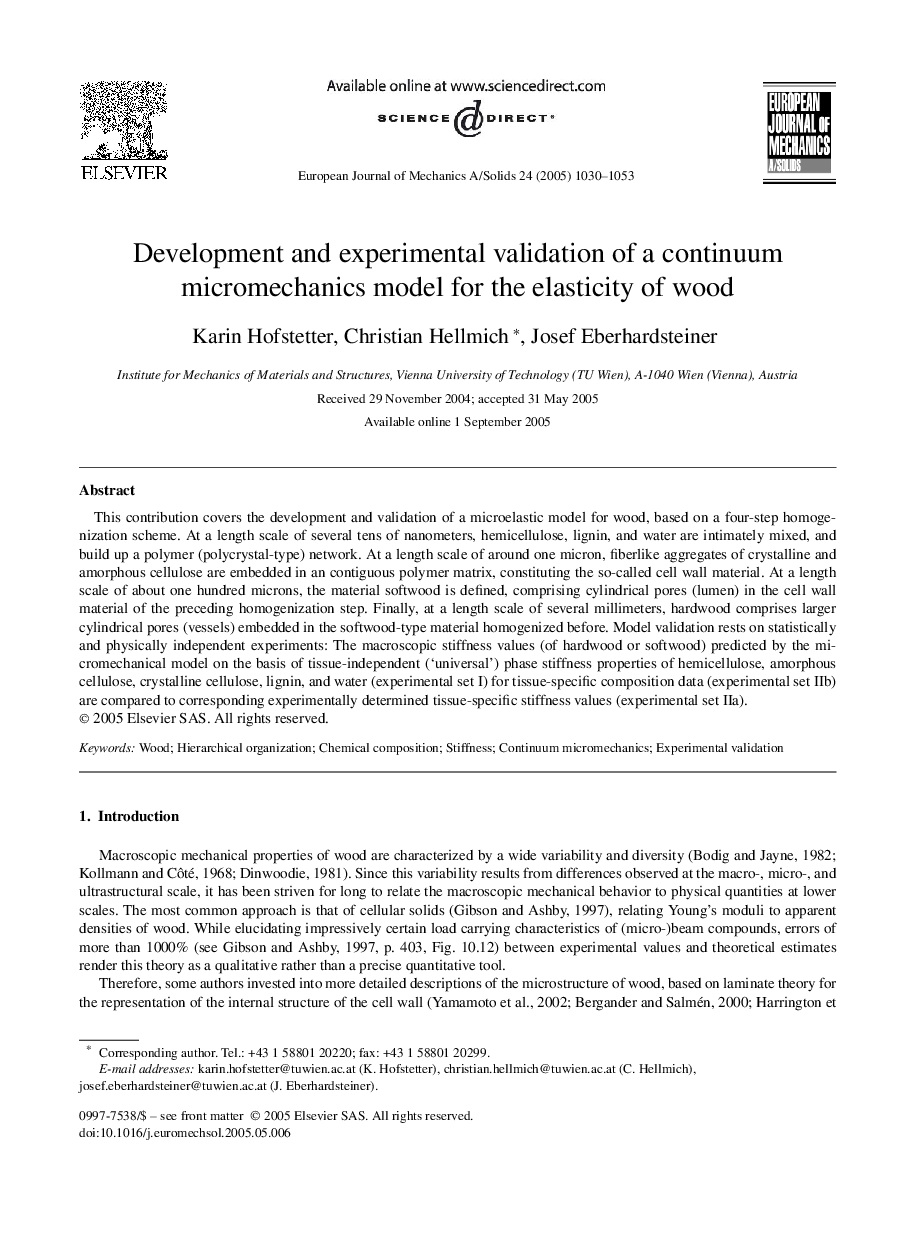| Article ID | Journal | Published Year | Pages | File Type |
|---|---|---|---|---|
| 9703056 | European Journal of Mechanics - A/Solids | 2005 | 24 Pages |
Abstract
This contribution covers the development and validation of a microelastic model for wood, based on a four-step homogenization scheme. At a length scale of several tens of nanometers, hemicellulose, lignin, and water are intimately mixed, and build up a polymer (polycrystal-type) network. At a length scale of around one micron, fiberlike aggregates of crystalline and amorphous cellulose are embedded in an contiguous polymer matrix, constituting the so-called cell wall material. At a length scale of about one hundred microns, the material softwood is defined, comprising cylindrical pores (lumen) in the cell wall material of the preceding homogenization step. Finally, at a length scale of several millimeters, hardwood comprises larger cylindrical pores (vessels) embedded in the softwood-type material homogenized before. Model validation rests on statistically and physically independent experiments: The macroscopic stiffness values (of hardwood or softwood) predicted by the micromechanical model on the basis of tissue-independent ('universal') phase stiffness properties of hemicellulose, amorphous cellulose, crystalline cellulose, lignin, and water (experimental set I) for tissue-specific composition data (experimental set IIb) are compared to corresponding experimentally determined tissue-specific stiffness values (experimental set IIa).
Keywords
Related Topics
Physical Sciences and Engineering
Engineering
Mechanical Engineering
Authors
Karin Hofstetter, Christian Hellmich, Josef Eberhardsteiner,
